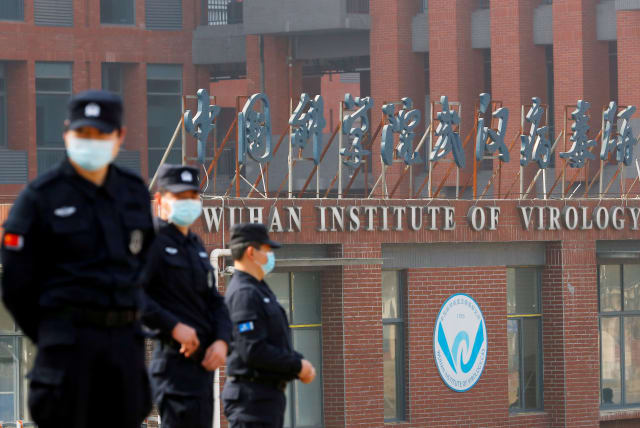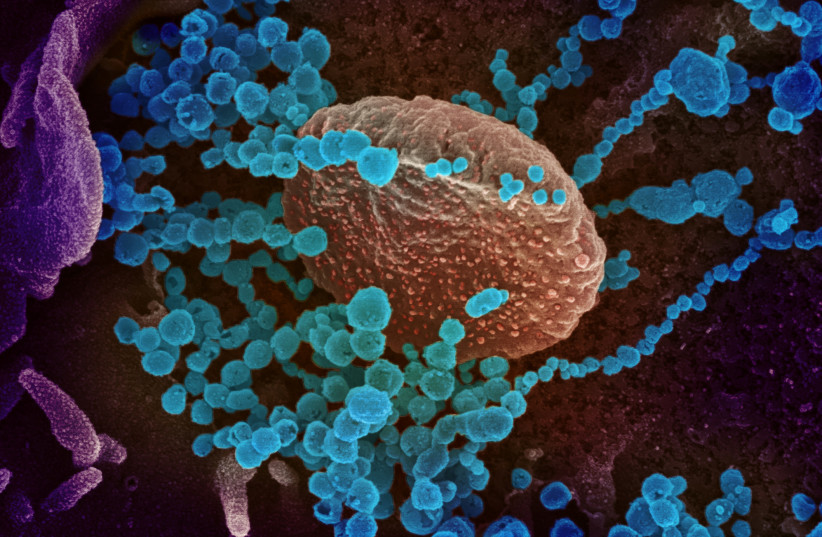Why China's COVID-19 'lab leak' still matters - analysis

How can people prevent a future pandemic if they don’t know basic details about how the recent one began?
Recent reports from the US have led to renewed coverage of the origins of COVID-19. This began with a new report on findings of the US Energy Department which apparently concluded with a "low confidence" finding that the coronavirus pandemic began with a lab leak.
This has set off a growing discussion of the “lab leak” issue. Reports on Wednesday said that FBI Director Christopher Wray had said that the bureau believes COVID-19 “most likely” originated in a “Chinese government-controlled lab,” the BBC reported
“The FBI has for quite some time now assessed that the origins of the pandemic are most likely a potential lab incident,” Wray told Fox News. BBC noted that Wray's comments come a day after the US ambassador to China called for the country to "be more honest" about COVID's origins.
CNN noted that “the Office of the Director of National Intelligence issued a 2021 report that revealed the National Intelligence Council, along with four other unidentified agencies, assessed with low confidence that the initial COVID-19 infection ‘was most likely caused by natural exposure to an animal infected with it or a close progenitor virus.’”
When did the lab leak controversy begin?
The controversy over the origins of COVID goes back to the very beginning of the pandemic. During the first year of the spread of the virus, it was often considered controversial or even a “conspiracy” to suggest that it emerged from a lab in Wuhan. In fact, for much of the first year of the pandemic, there was not much mention of the Wuhan lab and also the fact that it was a leading lab doing research into this kind of virus.
Nevertheless, early reports in 2020 did point to research at the Wuhan lab. A Wall Street Journal story in April 2020 noted “China bat expert says her Wuhan lab wasn’t source.” In general, in the first year and a half of the pandemic, it was difficult for the media to get any answers from China about what had happened. By June and August 2021, there was pushback in China against the “lab leak” theory. By that time, China had already blocked a WHO team sent to study the origins of the virus.
Back in February 2020, there was a report of the WHO-China Joint Mission on Coronavirus Disease 2019 (COVID-19) which made several key claims that underpinned future discussion of the virus. First, the report claimed that the “epidemic rapidly grew from 10-22 January, reported cases peaked and plateaued between 23 January and 27 January, and have been steadily declining since then.” We now know this wasn’t true, it didn’t decline, it grew to become a pandemic. The report also said “COVID-19 is a zoonotic virus. From phylogenetics analyses undertaken with available full genome sequences, bats appear to be the reservoir of COVID-19 virus, but the intermediate host(s) has not yet been identified.”
The report said that researchers had done “early investigations of cases with symptom onset in Wuhan throughout December 2019, environmental sampling from the Huanan Wholesale Seafood Market and other area markets, and the collection of detailed records on the source and type of wildlife species.” As of 25 February 2020 “an animal source has not yet been identified.” While initially denying human-to-human transmission, the report claimed that “at some point early in the outbreak, some cases generated human-to-human transmission chains that seeded the subsequent community outbreak prior to the implementation of the comprehensive control measures that were rolled out in Wuhan…The cordon sanitaire around Wuhan and neighboring municipalities imposed since 23 January 2020 has effectively prevented further exportation of infected individuals to the rest of the country.”
We now know that the report was flawed. The control measures that were imposed didn’t prevent the exportation of infection, in fact, the pandemic went on to kill millions and a swath of the world was shut down for years. Over time most of the controversies about COVID have centered on various responses by countries, such as mask mandates and vaccine mandates. Today, most of the restrictions and mandates have ended.
After the pandemic, the world now has time to look at COVID's origins
This means that now that countries are not focused on the emergency, they have time to look at the origins of the pandemic. The US appears to be the center of where the origins of COVID have gained traction in media and government circles. This matters because today the world is increasingly divided between authoritarian regimes, such as China and Russia, and Western democracies. In addition, a new article in Foreign Affairs notes how important “innovation power” is in the world today, reporting that “the Chair of the Special Competitive Studies Project and former Google CEO Eric Schmidt writes that ‘the ability to innovate faster and better—the foundation on which military, economic, and cultural power now rest — will determine the outcome of’ future great power competition.”
We live in a world where there is unprecedented innovation and access to information. However, the origins of the pandemic appear shrouded in mystery. How is this possible?
Given all the information that governments have, how is it that a “patient zero” hasn’t been found? How is it that more details are not known? The enduring mystery leaves people with questions about what happened. While many countries have preferred not to make this a major issue with China, it appears important that issues that can cause millions of deaths, such as pandemics, should be investigated and future pandemics prevented. How can people prevent a future pandemic if they don’t know basic details about how the recent one began?
For instance, what went wrong in Wuhan in late 2019 and early 2020 that led to a pandemic? We now know the “controls” implemented didn’t prevent the spread. If the first theory posited that the natural origin of the pandemic was some kind of “market” then this leads to a secondary question. There was a leading research lab in the city. Why didn't its presence lead to the immediate identification and containment of the pandemic? If having research labs helps us prevent pandemics, then how is it possible we couldn’t prevent one in the same city as a lab? This poses difficult questions for those who say that the origin was natural and we need more research to prevent pandemics. We couldn’t even stop one in a city with a leading lab.
On the other hand, if it was a “lab leak,” that poses difficult questions for countries that rely on China. Countries want to be able to share information about accidents like this, whether it is something like what happened in Chernobyl or a pandemic. If powerful countries are unreliable at sharing data, then this poses problems for the international community.
These two issues – having a leading lab in a city with an outbreak and not stopping the outbreak, and obfuscating its origins – mean that the “lab leak” controversy should continue to be a subject of discussion and an issue of national security. The US is leading this discussion, but other countries affected by the pandemic have a vested interest in knowing what happened.
Jerusalem Post Store
`; document.getElementById("linkPremium").innerHTML = cont; var divWithLink = document.getElementById("premium-link"); if (divWithLink !== null && divWithLink !== 'undefined') { divWithLink.style.border = "solid 1px #cb0f3e"; divWithLink.style.textAlign = "center"; divWithLink.style.marginBottom = "15px"; divWithLink.style.marginTop = "15px"; divWithLink.style.width = "100%"; divWithLink.style.backgroundColor = "#122952"; divWithLink.style.color = "#ffffff"; divWithLink.style.lineHeight = "1.5"; } } (function (v, i) { });

